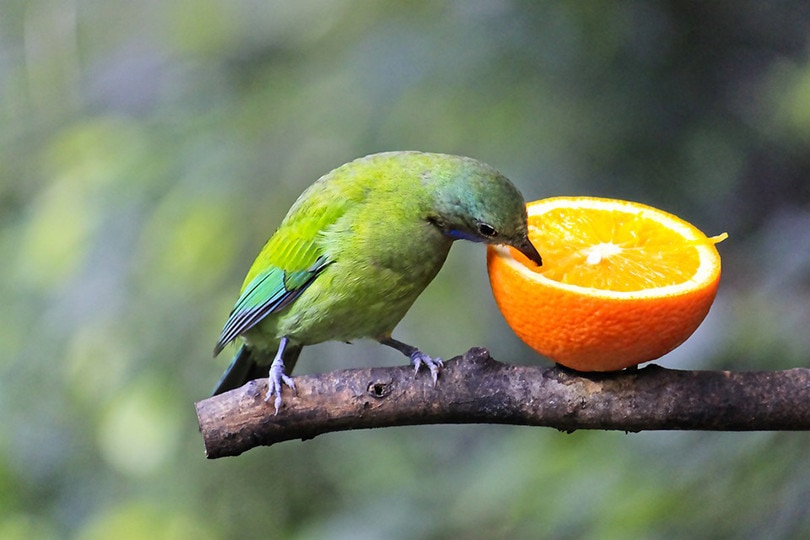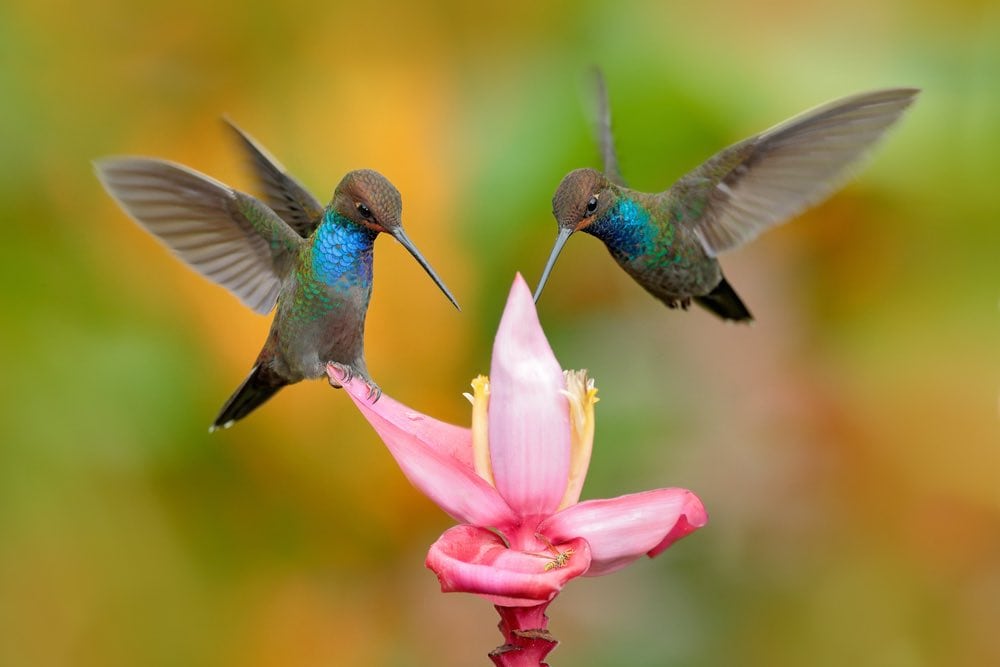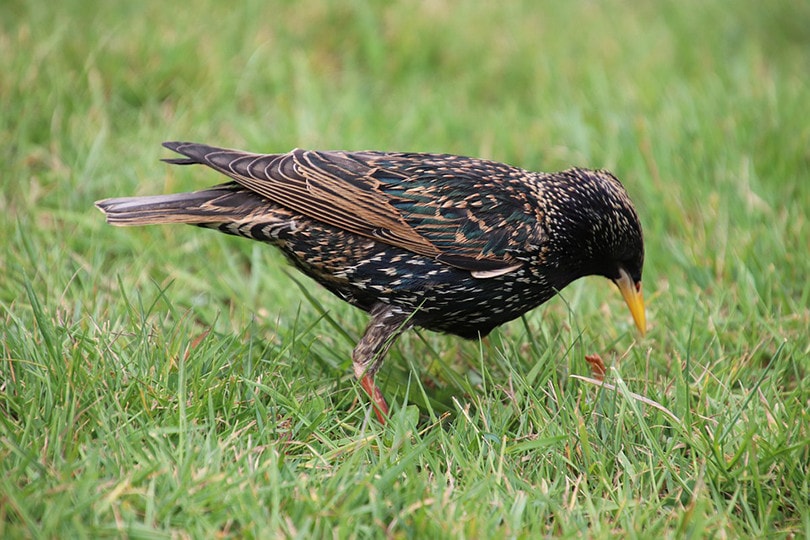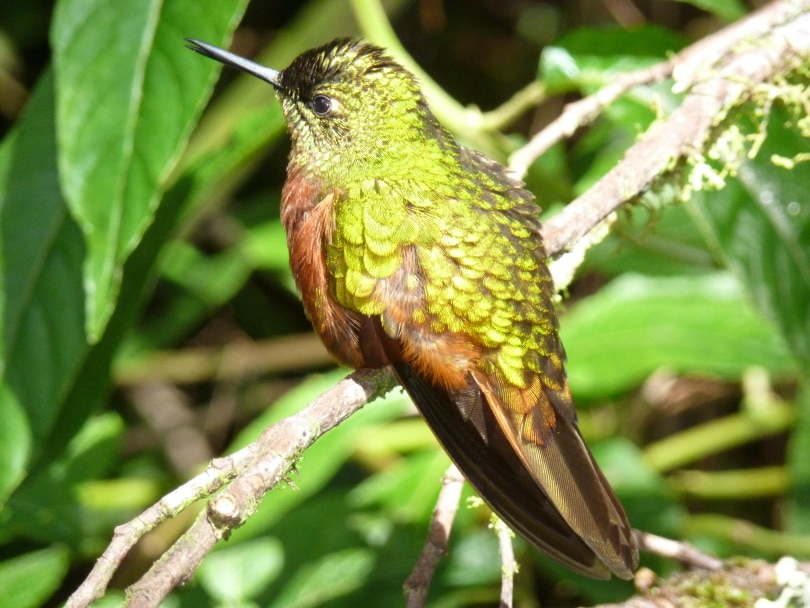Can Birds Taste Food? Do They Have Specific Tastes?
Last Updated on

When you spend time birdwatching and putting food in your bird feeder, you might think about whether they can taste that food. Enough studies have been done on birds to understand what kinds of food they thrive on and the kind that they seem to enjoy. But can they actually taste it?
Birds are indeed capable of tasting food but in a limited way, particularly in comparison to humans and mammals. We look at how birds taste and how that sense factors into their diets.

Do Birds Have Taste Buds?
This is an important question considering that we humans need taste buds to taste anything, so do birds have taste buds?
Just to put it all in perspective, we humans have about 9,000 taste buds as compared to parrots, which have the most taste buds compared to other birds at about 300 to 400. On the other end of the scale, chickens have the fewest taste buds at about 24.
However, where the taste buds are located are unique compared to our own. The majority of birds have taste buds on the roof and floor of the mouth and at the base of the tongue.
The front part of most birds’ tongues is typically coarse and hard, which probably explains why there are no taste buds located there.
So, yes, birds have taste buds, just not that many, and they’re located away from the front of the mouth.

The Bird’s Tongue
Many bird tongues look similar to our own but have different features depending on the type of bird. For example, many birds have tongues that are split slightly in the middle, and some have barbs.
Birds like hummingbirds and woodpeckers have long, thin tongues that can be extended far outside their bills to reach nectar or insects.
So, how many taste buds a bird has and how its tongue is designed has everything to do with the bird’s diet.
What Exactly Can Birds Taste?
What birds can taste, to our knowledge, is salty, sweet, bitter, brine, fats, and different sugar concentrations. Some birds are more in tune with certain tastes than others, depending on their diet.
We look at a few different species of birds to showcase these varying tasting abilities.
It should come as no real surprise that hummingbirds are quite talented at telling the difference between nectar that is low versus high in sugar. It’s thought that hummingbirds opt for the higher sugar concentrations because they end up spending less time foraging.
In fact, a study from 2014 discovered that part of what enables hummingbirds to identify sweet flavors is the evolution of their savory taste receptors. Essentially, these enable them to differentiate sweet because they are wired to taste savory.
Penguins

Penguins can apparently only taste salty and sour flavors, and they lost the rest of the other three basic tastes (sweet, savory, and bitter) a long time ago. However, since they swallow fish whole, having limited taste receptors doesn’t matter too much for penguins.
European Starling

The European Starling has a much more highly evolved sense of taste compared to other bird species. It can taste sweet and salty, as well as citric acids and tannins (which are bitter substances that can be found in different fruits and plants). Starlings can even tell the difference between common table sugar and other kinds of sugars.

Bitter Tastes
As a general rule, most birds avoid food that is high in bitter flavors or tannins. In some cases, food that is high in tannins can be quite toxic to birds. Oaks and therefore, acorns are known to be high in tannins, as well as persimmons.
Toxic plants tend to be bitter but so are Monarch butterflies. In fact, Monarchs are only preyed on by two species of birds: the Black-Backed Oriole and the Black-Headed Grosbeak.
While caterpillars, Monarchs eat milkweed; this contains cardenolides, which is a toxin. This enables the Monarch to store the toxins, which is also what makes them taste quite bitter. When a bird eats a Monarch, it might vomit, so it learns to avoid anything that tastes bitter, so it does’t become ill again.
But What About Hot Peppers?
Some people like to put paprika or other hot pepper-like spices in their bird feeders to discourage squirrels. So, how can birds have taste buds but still eat these spicy seeds?
Peppers contain capsaicin, which is what gives you that burning sensation after you’ve eaten a hot pepper. The Scoville scale is how we register how hot peppers are, so for example, jalapeño peppers are relatively mild at 2,500 to 8,000 heat units (SHU), whereas the Carolina Reaper is a blistering 2,200,000 SHU!
So, where a squirrel can barely stand the level of a jalapeño, birds can withstand a habanero, which stands about in the 150,000 SHU range!
This is primarily due to the evolutionary process of hot peppers. Mammals that eat hot peppers will end up destroying the seeds inside their stomachs through digestion. But with birds, the hot pepper seeds pass through the digestive system and will be distributed to wherever the bird flies and poops. This helps ensure the continued existence of the pepper plant.

What About the Attraction to Different Foods?
If you’ve ever wondered what attracts the birds to your feeders, it isn’t taste — it’s the color. Birds rely much more heavily on sight and touch than taste when finding the right and best foods.
Many songbirds around the world look for food that has high contrast, so blacks, reds, purples, and blues, for example.
Consider what different birds prefer. For example, birds that prefer seeds and grains won’t be attracted to nectars or sugary foods. Vultures and birds prefer carrion, and their taste has evolved to appreciate the flavor of dead things, but their sense of smell is more highly sensitive so they can find their next meal.
In Conclusion
So, while the taste buds of birds aren’t as sensitive as our own, they have helped guide birds to keep them safe. Birds know to avoid anything bitter for fear of toxicity, and those taste receptors help guide them toward fruit that is ripe or to flowers that have the best sugar levels.
All their senses work together to help them survive in this world, and we can continue to enjoy watching and listening to them.
Featured Image Credit: lorilorilo, Pixabay
About the Author Kathryn Copeland
Kathryn was a librarian in a previous lifetime and is currently a writer about all things birds. When she was a child, thanks to her love of animals she hoped to work in zoos or with wildlife in some way. She's not strong in the sciences, unfortunately, so she uses her time to research and write about all kinds of birds and animals, and hopes to bring that detailed knowledge to OpticsMag.
Related Articles:
How to Clean a Refractor Telescope: Step-by-Step Guide
How to Clean a Telescope Eyepiece: Step-by-Step Guide
How to Clean a Rifle Scope: 8 Expert Tips
Monocular vs Telescope: Differences Explained (With Pictures)
What Is a Monocular Used For? 8 Common Functions
How to Clean a Telescope Mirror: 8 Expert Tips
Brightfield vs Phase Contrast Microscopy: The Differences Explained
SkyCamHD Drone Review: Pros, Cons, FAQ, & Verdict
